Have you ever found yourself completely paralyzed while lying in bed? Maybe you could see and hear everything around you, but you couldn’t seem to move a muscle. If so, you may have experienced sleep paralysis, a rare condition that affects millions of people worldwide. While sleep paralysis can be a terrifying experience, it has also been linked to another phenomenon known as lucid dreaming, where the dreamer is aware that they are dreaming and can often control the dream’s content. The relationship between sleep paralysis and lucid dreaming is complex and intriguing, and scientists are still working to understand it fully. In this article, we will explore this connection, understand the benefits of lucid dreaming, and discuss ways to induce and safely manage lucid dreams during sleep paralysis. We will also examine the science behind this connection, as well as lifestyle changes that can encourage lucid dreaming and prevent sleep paralysis. Let’s dive in!
Contents
- What is Sleep Paralysis?
- Lucid Dreaming Defined
- Sleep Paralysis and Lucid Dreaming
- Overcoming Sleep Paralysis
- The Connection Between Sleep Paralysis and Other Sleep Disorders
- Tips to Induce Lucid Dreams and Overcome Sleep Paralysis
- The Science Behind Sleep Paralysis and Lucid Dreaming Connection
- Lifestyle Changes to Encourage Lucid Dreaming and Prevent Sleep Paralysis
- The Dangers of Lucid Dreaming
- Conclusion
-
Frequently Asked Questions
- What is the difference between a regular dream and a lucid dream?
- Can anyone learn how to lucid dream?
- Can lucid dreaming be dangerous?
- Will lucid dreaming affect my quality of sleep?
- Is there a connection between sleep paralysis and anxiety?
- Can medication help with sleep paralysis?
- Can sleep paralysis be prevented?
- How long do sleep paralysis episodes typically last?
- What percentage of people experience lucid dreams?
- Can lucid dreaming help with creativity?
- References
What is Sleep Paralysis?
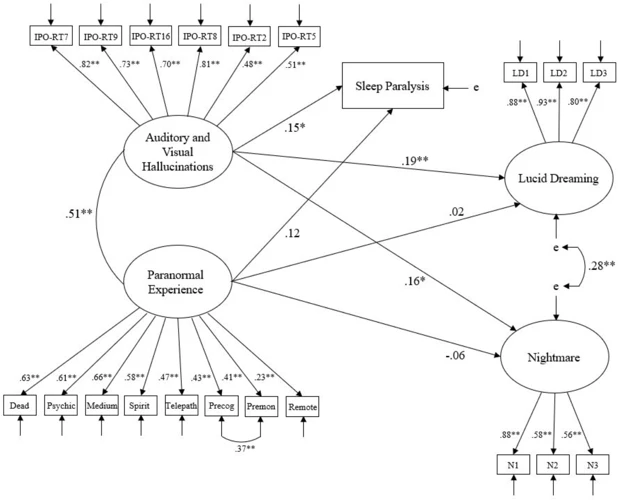
Sleep paralysis is a phenomenon that can leave a person feeling completely vulnerable and helpless. It is a state in which the body is unable to move, despite being conscious and awake. This experience can be terrifying for those who have gone through it, and many people may not even be aware that they have experienced it before. The causes of sleep paralysis are still not entirely understood by science, which only adds to the perplexity of this condition. Let’s explore this strange and mysterious condition together.
Symptoms of Sleep Paralysis
Sleep paralysis is a terrifying occurrence that can leave individuals feeling helpless and vulnerable. It typically strikes when the person is in a state between being asleep and being awake, either as a person is falling asleep or just as they are waking up. Here are some of the most common symptoms of sleep paralysis:
- Complete immobility: One of the telltale signs of sleep paralysis is the inability to move any part of the body, despite all efforts.
- Feelings of pressure: Many people experience a sense of pressure or weight on their chest or stomach during an episode of sleep paralysis, which can cause a feeling of suffocation.
- Hallucinations: People with sleep paralysis often report seeing or hearing things that are not really there. These can include shadowy figures, distant noises, or even physical sensations like being touched or pulled.
- Anxiety and Fear: Due to the disorienting and oppressive nature of the sleep paralysis symptoms, sufferers often experience intense emotions such as anxiety, fear, or outright panic.
The symptoms of sleep paralysis can vary from person to person, with some people experiencing only one or two symptoms while others experience all of them. The condition can be deeply distressing for those who suffer from it and can interfere with the person’s ability to sleep well and function properly during the day. It is important to seek medical advice if symptoms persist, to rule out any underlying medical causes.
Why Does Sleep Paralysis Occur?
There are several explanations as to why sleep paralysis occurs. Below are some of the most commonly cited reasons:
- Sleep-Wake Transitions: Sleep paralysis can occur when the body and brain are transitioning between different stages of sleep. During REM sleep, our muscles are typically paralyzed to prevent us from physically acting out our dreams. If the mechanism that causes this paralysis fails to turn off after we wake up, it can result in a state of sleep paralysis.
- Sleep Deprivation: Lack of sleep or poor quality sleep can also trigger sleep paralysis. When we are sleep-deprived, our brains can struggle to properly regulate the sleep-wake cycle, leading to increased chances of experiencing sleep paralysis.
- Stress and Anxiety: Stress and anxiety can also be contributing factors to sleep paralysis. During times of high stress, our bodies produce more cortisol, a hormone that can interfere with sleep and contribute to a higher likelihood of experiencing sleep paralysis.
- Sleep Disorders: Certain sleep disorders, such as narcolepsy, can increase the likelihood of experiencing sleep paralysis. People with narcolepsy often experience disruptions to their sleep-wake cycle, leading to an increased likelihood of experiencing sleep paralysis.
It’s worth noting that sleep paralysis can occur on its own, or it may be a symptom of an underlying sleep disorder or mental health condition. It’s important to speak with a healthcare professional if you experience sleep paralysis frequently or if it is affecting your day-to-day life.
Lucid Dreaming Defined
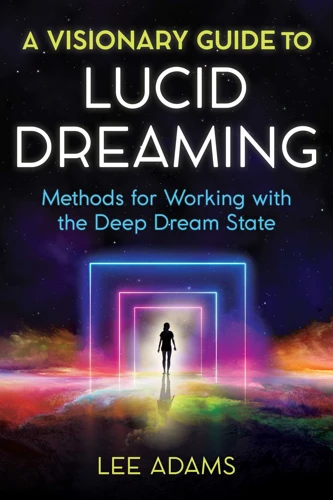
Have you ever had a dream where you were fully aware that you were dreaming? This state of consciousness within a dream is known as lucid dreaming. Lucid dreaming allows the dreamer to actively participate in and control their dreams. It’s a topic that has fascinated philosophers, psychologists, and scientists for centuries, with many studies exploring the benefits and potential dangers of this phenomenon. In this section of the article, we will define and delve deeper into the concept of lucid dreaming.
What are the Benefits of Lucid Dreaming?
Lucid dreaming is not only a unique experience but it also has several benefits that can enhance one’s waking life. In this section, we will discuss the potential advantages of lucid dreaming.
| Benefit | Description |
|---|---|
| Better sleep quality | Lucid dreaming can help you get a more restful and rejuvenating sleep since it tends to reduce the number of times you wake up during the night. This is because your body is more relaxed and your mind is at ease. |
| Reduced anxiety and stress | Since lucid dreaming takes place in your mind, it can provide a sense of control and relaxation. This allows you to reduce anxiety and stress-related symptoms during the day. |
| Improved creativity | Lucid dreaming allows you to explore and manipulate your imagination without any physical restraints. This can help enhance your creativity and problem-solving skills in waking life. |
| Improved cognitive abilities | Lucid dreaming can enhance your cognitive abilities by providing you with the opportunity to practice your skills and memory while in the dream state. |
| Enhanced self-awareness | Lucid dreaming provides you with the chance to explore the inner workings of your mind and explore your subconscious thoughts, fears, and desires. This can help develop a greater sense of self-awareness. |
| Reduced nightmares | If you suffer from frequent nightmares, lucid dreaming can provide you with a sense of control and help you overcome your fears while in the dream state. |
The benefits of lucid dreaming can lead to a more restful sleep, reduced anxiety and stress, improved creativity and cognitive abilities, enhanced self-awareness, and reduced nightmares.
How Does One Induce Lucid Dreams?
There are many ways to induce lucid dreams. Below is a table outlining some techniques:
| Technique | Description |
|---|---|
| Dream Journalling | Keep a dream journal by your bed and write down your dreams as soon as you wake up. This helps you become more aware of your dreams and may lead to lucidity. |
| Reality Checks | Throughout the day, perform reality checks such as looking at a clock and then looking away and back again. In a dream, the time will often change or be blurry, indicating that you are dreaming. |
| WBTB | Wake up after 5-6 hours of sleep and then go back to bed. During this time, focus on lucid dreaming and perform techniques like visualization or reality checks. |
| Visualizations | Visualize yourself becoming lucid in a dream. Picture yourself realizing that you are dreaming and then taking control of the dream. |
| MILD | mnemonic induction of lucid dreams is a technique that involves telling yourself before bed that you will remember your dreams and become lucid. Repeat a phrase like “Next time I’m dreaming, I will remember that I’m dreaming.” |
It’s important to note that not all techniques work for everyone, and consistency and practice is key in achieving lucid dreams.
Sleep Paralysis and Lucid Dreaming
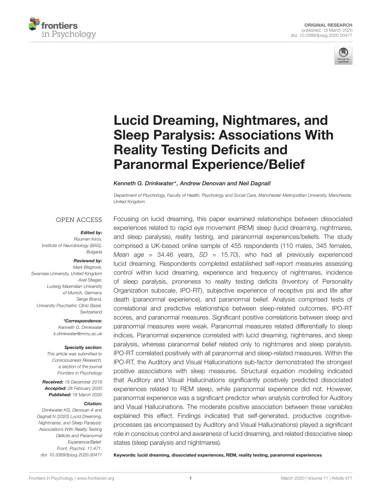
As we delve deeper into the topic of sleep paralysis and lucid dreaming, one can’t help but wonder: is there a link between the two? Can sleep paralysis actually serve as a gateway to achieving lucid dreams? Many people have reported having lucid dreams during episodes of sleep paralysis, which has raised questions about this intriguing connection between the two phenomena. Let’s explore this mysterious link further and see what revelations we uncover.
Lucid Dreaming During Sleep Paralysis
During the experience of sleep paralysis, the body is completely or partially paralyzed, and the individual may be unable to move or speak. However, it is during this vulnerable state that the phenomenon of lucid dreaming can occur. Lucid dreaming is when the dreamer is conscious within their dream and can actively participate and control the dream environment. This type of dreaming is a natural occurrence and can happen during any stage of sleep, although it is most common during deep REM sleep.
Although it may be frightening to experience sleep paralysis, some people have reported using it as a gateway to lucid dreaming. If you find yourself in the midst of a sleep paralysis episode, it can be helpful to try to relax and focus on calming thoughts. Some people have reported being able to use the paralysis to their advantage, allowing them to slip directly into a lucid dream state.
One popular technique for inducing lucid dreaming during sleep paralysis is known as the “wake-back-to-bed” method. This technique involves setting an alarm to wake you up several hours into your sleep, getting out of bed for a few minutes, then returning to bed with the intention of entering a lucid dream state.
While lucid dreaming during sleep paralysis can be a fascinating experience, it is important to remember that it can also be a potentially dangerous one. It is crucial to learn how to maintain control over lucid dreams and to be aware of the potential risks associated with this practice.
How to Safely Control Lucid Dreams during Sleep Paralysis
One of the key aspects of safely controlling lucid dreams during sleep paralysis is to maintain awareness of the fact that you are in a dream state. Here are some tips to safely control lucid dreams during sleep paralysis:
- Remain Calm: When you become aware that you are in a state of sleep paralysis, it can be tempting to panic. However, it is important to remain calm and remind yourself that you are in a dream state. This can help you gain control of the dream and prevent it from turning into a nightmare.
- Keep a Positive Mindset: Your thoughts can influence the events of the dream, so it is important to maintain a positive mindset. Focus on positive thoughts and feelings, and avoid negative thoughts or emotions.
- Visualize: Visualizing the surroundings or creating an image in your mind can allow you to regain control of your dream. By imagining a peaceful setting or a place where you feel safe, you can shift the dream in a positive direction.
- Experiment: Once you have gained control of your dream, you can experiment with different dream scenarios. You can change your surroundings or interact with different dream characters.
- Exit the Dream Safely: When you are ready to exit the dream, it is important to do so safely. You can try to wake up slowly or visualize yourself leaving the dream in a peaceful way.
Remember, it is important to approach lucid dreaming with caution and care, as it can be a powerful experience that can have both positive and negative effects.
Overcoming Sleep Paralysis

Sleep paralysis can be a terrifying experience for those who suffer from it. The feeling of being unable to move or speak while being fully conscious can be overwhelming and cause a lot of distress. Despite being a common occurrence, there are still many mysteries surrounding the phenomenon of sleep paralysis. In this section, we will explore different methods and techniques to overcome sleep paralysis and take control of your dreaming experience. Whether you are looking to safely explore lucid dreaming or simply want to avoid the fear and discomfort that come with sleep paralysis, there are steps you can take to combat this condition. Let’s dive into the strategies for overcoming sleep paralysis.
How Does Lucid Dreaming Help Overcome Sleep Paralysis?
Lucid dreaming can be an effective way to overcome sleep paralysis. It allows individuals to take control of their dreams and turn a scary experience into a positive one. Here are some ways lucid dreaming can help overcome sleep paralysis:
| Benefit of Lucid Dreaming | How it Helps with Sleep Paralysis |
|---|---|
| Reduced anxiety and fear | The awareness that one is in a dream can reduce anxiety and fear associated with sleep paralysis. The dreamer can shift their focus to the dream world and create a positive experience. |
| Ability to control the dream environment | Lucid dreamers can control their environment, which means they can change the scenario causing the sleep paralysis. For example, if they are in a scary dream state, they can change the dream to a positive one. |
| A sense of empowerment | Lucid dreaming gives individuals a sense of control and empowerment over their dreams. This can translate to their waking life and help them feel more in control of their experiences, reducing the occurrence of sleep paralysis. |
Remember, it’s important to approach lucid dreaming with caution and care. It’s important to have a solid understanding of the process and to take careful steps in order to induce and control lucid dreams effectively.
The Connection Between Sleep Paralysis and Other Sleep Disorders
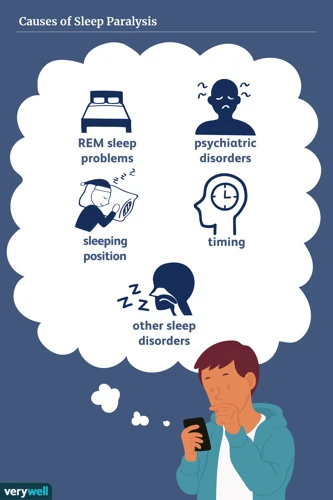
As we explore the intricate world of sleep paralysis, it’s important to recognize that this sleep disorder is not an isolated phenomenon. In fact, there are various other sleep disorders that share a connection with sleep paralysis, further highlighting the complexity and importance of sleep health. Let’s delve deeper into some of these disorders and how they intersect with sleep paralysis.
Sleepwalking and Sleep Paralysis
Sleepwalking and sleep paralysis are two disorders that can occur in combination, but they operate in opposite ways. Sleepwalking or Somnambulism is a type of parasomnia, which is an abnormal behavior that seems to emerge during deep sleep. A person experiencing sleepwalking may seem like they are conscious, but they are actually in a deep sleep state. This condition is most common among children, but it can happen to anyone. Some reasons why people may experience sleepwalking include genetics, stress, sleep deprivation or even medication.
Sleep paralysis, on the other hand, is a condition where the person is unable to move, speak or even open their eyes for a few seconds or minutes, usually when they awaken from sleep. This happens because the body goes into a state where the muscles are inhibited, preventing movement. When this happens, individuals may also experience hallucinations, which can be scary or disturbing.
Although sleepwalking and sleep paralysis are opposite in terms of physical movement, they are both considered to be parasomnias. Research shows that people who experience sleepwalking are more likely to also experience sleep paralysis. However, the combination or coexistence of the two sleep disorders is relatively uncommon.
If you are experiencing both conditions, it is important to seek medical attention to determine the underlying cause of the disorders. In some cases, treating a sleep disorder can help alleviate symptoms of the other disorder. Additionally, incorporating healthy sleep habits can help decrease the frequency of both conditions.
It is essential to prioritize good sleep hygiene and seek medical help when necessary to manage both sleepwalking and sleep paralysis. Understanding the science behind these sleep disorders can help individuals make informed decisions about their health and wellbeing.
REM Sleep Disorder and Sleep Paralysis
One sleep disorder that is closely related to sleep paralysis is REM Sleep Disorder. REM Sleep Disorder is a condition that occurs when the normal muscle atonia during REM sleep doesn’t function properly. This can lead to the person physically acting out their dreams.
During a typical sleep cycle, the body goes through a variety of different sleep stages, including rapid eye movement (REM) sleep. During REM sleep, the brain is highly active while the body remains immobile to prevent any physical reactions to dreams. However, in individuals with REM Sleep Disorder, this muscle atonia doesn’t occur, which leads to vocalizations, erratic movements or hitting movements during sleep, and it can also increase the likelihood of experiencing sleep paralysis symptoms.
The relationship between Sleep Paralysis and REM Sleep Disorder is complex, as both disorders share some similar symptoms, such as vivid hallucinations and feeling of fear. However, unlike Sleep Paralysis, REM Sleep Disorder often occurs in the first half of the night when REM sleep occurs. In contrast, Sleep Paralysis occurs during the transitions between wakefulness and sleep or during waking up. Despite this difference, the two conditions may sometimes occur together.
Individuals with REM Sleep Disorder are known to have more nightmares, which may be related to the hallucinations experienced during REM sleep. Studies have suggested that lucid dreaming may help to reduce the occurrence of nightmares and improve sleep quality in people with REM Sleep Disorder.
In summary, REM Sleep Disorder is a sleep disorder that involves physical movements during REM sleep due to the lack of normal muscle atonia. This disorder can increase the chances of experiencing sleep paralysis symptoms. Research suggests that lucid dreaming may potentially help reduce nightmares and improve sleep quality in individuals with this condition.
Tips to Induce Lucid Dreams and Overcome Sleep Paralysis
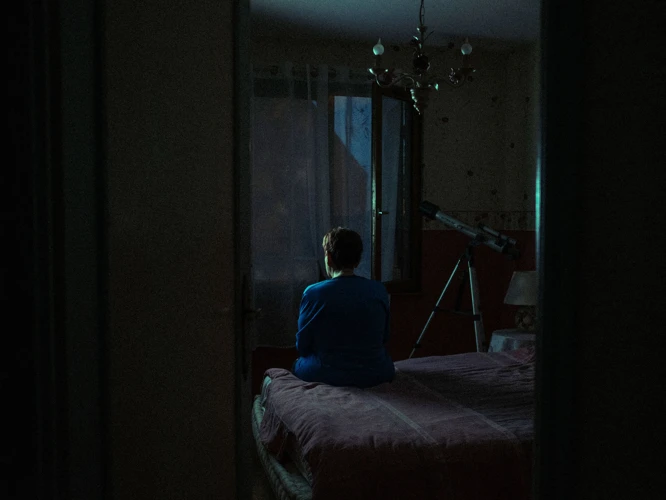
Are you struggling with sleep paralysis and dreaming? Have you been trying to induce lucid dreams but with no success? Worry no more as we’ve got some effective tips for you to overcome sleep paralysis and increase your chances of experiencing lucid dreams. From developing a sleep routine to meditation and yoga, these tips will help you take control of your sleep and dreaming patterns. Keep reading to learn more.
Steps to Induce Lucid Dreams
Achieving a lucid dream can be a challenging task, but there are certain steps you can take to increase your chances of inducing one. Here are some effective methods for inducing lucid dreams:
| Method | Description |
| Mindfulness meditation | This practice involves focusing on the present moment and increasing awareness of thoughts and sensations. By practicing mindfulness, you can increase your ability to recognize when you are dreaming. |
| Reality testing | Throughout the day, ask yourself if you are dreaming. Look for odd or inconsistent details that may signify a dream state. |
| Wake back to bed | Set an alarm for 4-6 hours after you go to sleep. After waking up, stay awake for around 20-30 minutes, then go back to sleep with the intention of having a lucid dream. |
| WILD | Wake-induced lucid dreaming involves remaining conscious while your body falls asleep. This method requires dedication and practice, but can lead to a highly immersive and vivid lucid dream. |
| Mnemonic induction of lucid dreams (MILD) | This technique involves setting an intention to recognize when you are dreaming before going to sleep. Throughout the night, repeat to yourself “I will recognize that I’m dreaming” while visualizing a dream scenario. |
| Herbs and supplements | Certain herbs and supplements, such as valerian root and melatonin, can increase dream vividness and potentially induce lucid dreams. It is important to consult with a healthcare professional before trying any new supplements or herbs. |
Keep in mind that everyone’s experience with lucid dreaming is different, so it may take some trial and error to find a method that works for you. Additionally, it is important to approach lucid dreaming with a sense of responsibility and respect, as it can have both positive and negative consequences.
Steps to Overcome Sleep Paralysis
To overcome sleep paralysis, there are several steps you can take to prevent it from occurring or to decrease its frequency. Here are some of the steps that may be helpful:
| Step | Description |
| Develop a sleep routine | Stick to a regular sleep schedule and create a restful sleep environment to promote a healthy sleep pattern. |
| Avoid sleep deprivation | Get an adequate amount of sleep every night to reduce the occurrence of sleep paralysis episodes. |
| Reduce stress | Practice stress reduction techniques such as yoga, meditation and deep breathing exercises to reduce stress and anxiety levels. |
| Change sleep position | Avoid sleeping on your back and try sleeping on your side to prevent sleep paralysis from occurring. |
| Avoid stimulants | Avoid consuming caffeine or alcohol before bed, as these can increase the likelihood of sleep paralysis episodes. |
| See a doctor | If you experience sleep paralysis frequently or have any accompanying symptoms, consult a doctor to rule out any underlying medical conditions. |
By taking these steps, you can reduce the frequency of your sleep paralysis episodes or eliminate them altogether. Remember to consult a doctor if your symptoms persist or worsen, as there may be underlying conditions that require medical attention.
The Science Behind Sleep Paralysis and Lucid Dreaming Connection
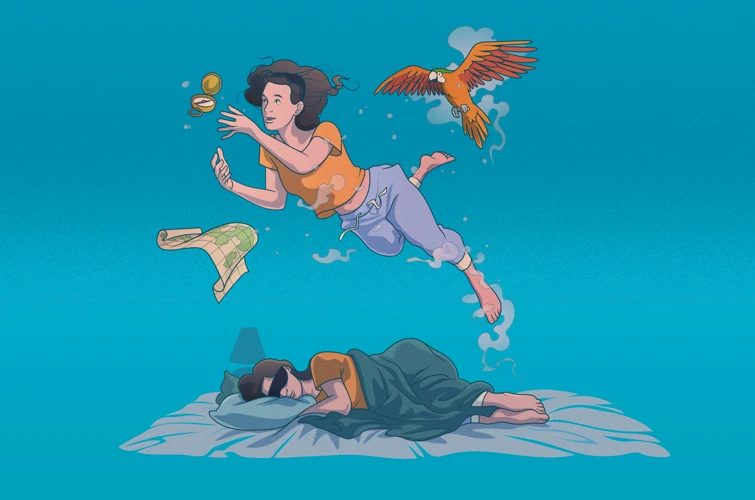
As intriguing as the connection between sleep paralysis and lucid dreaming may seem, science has delved into understanding how and why these two phenomena are interconnected. Through extensive research and studies, scientists have uncovered various theories that shed light on the science behind this relationship. This section will explore these scientific findings and delve deeper into the understanding of the connection between sleep paralysis and lucid dreaming.
Research Findings and Studies
Various research studies have been conducted to explore the relationship between sleep paralysis and lucid dreaming. One study found that individuals who frequently experienced sleep paralysis were more likely to have lucid dreams. Another study showed that regular lucid dreamers were less likely to experience sleep paralysis in comparison to those who didn’t practice lucid dreaming.
Researchers have attempted to find the underlying neurological basis for this relationship. A study revealed that during sleep paralysis, the amygdala, which is responsible for processing emotions such as fear, is more active than during regular REM sleep, suggesting a link between the emotional content of dreams and sleep paralysis. Another study found that the activity in the pre-frontal cortex, which is responsible for decision-making and planning, is heightened during lucid dreaming, indicating a connection to the cognitive experience of both sleep paralysis and lucid dreaming.
The findings of these studies suggest that sleep paralysis and lucid dreaming are interrelated and have a common neurological basis. The research also provides insights into the potential benefits and dangers of lucid dreaming, as well as strategies for individuals to safely explore this state of consciousness.
Lifestyle Changes to Encourage Lucid Dreaming and Prevent Sleep Paralysis

Are you tired of struggling with sleep paralysis and feeling like you have no control over your dreams? Making some lifestyle changes could be the key to encouraging lucid dreaming and preventing sleep paralysis. By incorporating healthy habits into your daily routine, such as developing a consistent sleep schedule and practicing meditation or yoga, you may be able to experience more restful nights and unlock the potential for lucid dreaming. Let’s explore some tips and tricks for enhancing your sleep and taking control of your dreams.
Developing a Sleep Routine
Developing a sleep routine is key to encouraging lucid dreaming and preventing sleep paralysis. Here are some tips for developing a healthy sleep routine:
| Tip | Description |
| Stick to a schedule | Go to bed and wake up at the same time every day, even on weekends. Consistency is important for regulating your body’s internal clock. |
| Avoid screens before bed | Avoid using electronic devices for at least an hour before bed, as the blue light can disrupt your sleep cycle. |
| Create a relaxing environment | Create a calming atmosphere in your bedroom by keeping it cool, quiet, and dark. Use comfortable pillows and bedding that promote good sleep quality. |
| Avoid stimulating substances | Avoid caffeine and alcohol, which can disrupt the quality of your sleep. Eat a light dinner and avoid heavy or spicy foods close to bedtime. |
| Incorporate relaxation techniques | Incorporate relaxation techniques such as deep breathing, meditation, or progressive muscle relaxation into your nightly routine. This can help calm your mind and body, and prepare you for a restful night’s sleep. |
Following these tips consistently can help improve your overall sleep quality and increase your chances of having lucid dreams while avoiding sleep paralysis.
Meditation and Yoga for Sleep Improvement
If you’re looking for a natural way to improve your sleep, then meditation and yoga may be worth exploring. Both practices involve techniques that can help calm your mind and body, promoting relaxation and sleep.
Meditation is a mindfulness practice that can help you become more aware of your thoughts and feelings. By focusing your attention on your breath or a specific object, you can learn to quiet your mind and let go of worries that may be keeping you awake. A regular meditation practice can help reduce stress and anxiety, which are common culprits of insomnia.
Yoga, on the other hand, incorporates both physical postures and breathwork to help improve overall health and wellbeing. Many of the postures, or asanas, can help release tension and promote relaxation in the body. Certain pranayama, or breathwork, techniques can also be helpful for calming the mind and reducing stress.
Incorporating meditation and yoga into your daily routine may take some time and effort, but the results can be worth it. Here are a few tips to get started:
| Meditation Tips | Yoga Tips |
|---|---|
| Find a quiet, comfortable place to meditate | Choose a gentle yoga practice, such as restorative yoga or yin yoga |
| Sit or lie down in a comfortable position | Use props, such as blankets or bolsters, to support your body and help you relax |
| Set a timer for your meditation practice | Focus on your breath and move slowly and mindfully through each posture |
| Start with a short practice, such as five minutes, and gradually increase the time as you become more comfortable | Avoid rigorous or stimulating yoga practices, such as power yoga or hot yoga, before bedtime |
| Try a guided meditation or use a meditation app to help guide your practice | End your yoga practice with a few minutes of relaxation or meditation to help calm the mind |
While meditation and yoga can be helpful for improving sleep, it’s important to note that they are not a substitute for medical treatment for sleep disorders. If you continue to have difficulty sleeping despite making lifestyle changes, it’s best to consult with a healthcare professional.
The Dangers of Lucid Dreaming
While lucid dreaming can be an exciting and even profound experience, it’s important to acknowledge that there are potential dangers involved. As with any altered state of consciousness, there are risks associated with lucid dreaming that could have negative effects on both mental and physical health. It’s crucial to approach lucid dreaming with a degree of caution and awareness, and to understand the potential pitfalls before delving too deeply into this practice. Let’s explore some of the possible dangers of lucid dreaming and how they can be managed or avoided.
Warnings for Beginner Lucid Dreamers
It’s important to be aware of the potential dangers of lucid dreaming, particularly for beginners. Here are some warnings that beginner lucid dreamers should keep in mind:
| Warning | Explanation |
|---|---|
| Confusion between dreams and reality | Lucid dreaming can make it difficult to distinguish between the dream world and the real world, which can lead to confusion when you wake up. |
| Nightmares | Lucid dreaming can sometimes lead to nightmares or sleep paralysis, which can be terrifying experiences. |
| Overstimulation of the brain | Lucid dreaming requires a high level of cognitive function and can lead to brain overstimulation, which may cause fatigue or mental exhaustion. |
| Obsessive behavior | Lucid dreaming can be addictive and may lead to obsessive behavior, which can interfere with daily life and relationships. |
While these warnings may sound scary, it’s important to remember that lucid dreaming can be a safe and enjoyable experience with the right techniques and mindset. It’s important to start with small goals and work your way up to more complex lucid dreaming experiences. If you have any concerns or experience any negative effects, it’s always a good idea to consult with a healthcare professional.
Lucid Dreaming Addiction
Lucid dreaming addiction is a relatively new concept in the field of sleep studies. While lucid dreaming can be a fascinating and exciting experience, it is important to note that too much of anything can have negative effects. Similarly, with lucid dreaming, excessive indulgence can lead to addiction and other mental health problems.
Signs of Lucid Dreaming Addiction
It can be hard to identify whether someone is addicted to lucid dreaming. However, certain signs of addiction can still be observed and are worth noting. These include:
| Signs of Lucid Dreaming Addiction | Description |
| 1. Obsessive Thoughts | Constant thoughts about lucid dreaming, even outside of sleep. Dreams start interfering with daily activities. |
| 2. Neglecting Sleep | Staying up late to induce lucid dreams or wake up in the middle of the night to write down or record lucid dreams. |
| 3. Deteriorating Mental Health | Lucid dreaming starts to affect mental health negatively. Nightmares and sleep paralysis become more frequent, and the person becomes anxious and paranoid. |
| 4. Avoiding Reality | The person starts feeling more attached to the dream world than the real world, and starts avoiding real-life responsibilities and interactions. |
| 5. Searching for More Powerful Dreams | The person starts experimenting with different techniques to induce more intense and longer lucid dreams. |
Risks of Lucid Dreaming Addiction
Lucid dreaming addiction can lead to several risks and problems, including:
| Risks of Lucid Dreaming Addiction | Description |
| 1. Sleep Deprivation | Excessive lucid dreaming can lead to sleep deprivation, making it difficult to perform daily activities. |
| 2. Neglecting Responsibilities | Lucid dreamers can get so immersed in their dreams that they start neglecting their work, academics, and relationships. |
| 3. Worsening Mental Health | Lucid dreaming addiction can exacerbate existing mental health conditions or cause new ones like anxiety disorders. |
| 4. Sleep Paralysis and Nightmares | In some cases, over-indulging in lucid dreams can lead to frequent sleep paralysis and nightmares, leading to more sleep deprivation and mental health problems. |
| 5. Addiction | Lucid dreaming addiction can lead to other addictions and compulsive behaviors. |
It is important to practice lucid dreaming in moderation and take necessary precautions to prevent addiction and other risks associated with excessive lucid dreaming.
Conclusion
In conclusion, exploring the relationship between sleep paralysis and lucid dreaming can provide insights into the mysterious world of dreams and offer potential solutions for those who suffer from sleep paralysis. Although sleep paralysis can be a terrifying experience, it can also act as a gateway to lucid dreaming, which has been associated with numerous cognitive and psychological benefits. However, it is important to approach lucid dreaming with caution and seek professional guidance before attempting to induce lucid dreams, especially for those who already experience sleep paralysis.
Through research studies, it has been established that sleep paralysis and lucid dreaming are interconnected and that inducing lucid dreams during sleep paralysis can provide a sense of control and empowerment that can alleviate the fear and distress often associated with sleep paralysis. Additionally, practicing lifestyle changes such as developing a regular sleep routine, meditation and yoga, can enhance sleep quality and increase the likelihood of experiencing lucid dreams while preventing sleep paralysis.
It is essential to understand that lucid dreaming, although potentially beneficial, can also pose dangers, especially to those who are inexperienced or prone to addiction. Therefore, proper guidance and caution are necessary to ensure the safe and responsible practice of lucid dreaming.
Overall, the relationship between sleep paralysis and lucid dreaming remains a fascinating and relatively unexplored field of study, and further research is needed to fully unravel its mysterious nature. However, it is clear that understanding and harnessing the power of dreams can have profound effects on our physical, emotional, and psychological well-being, and may hold the key to unlocking our full potential as human beings.
Frequently Asked Questions
What is the difference between a regular dream and a lucid dream?
A regular dream is when your brain is processing emotions and memories during the REM cycle of sleep. A lucid dream is when you become aware that you are dreaming and can control the dream’s outcomes.
Can anyone learn how to lucid dream?
Yes, virtually anyone can learn how to lucid dream with practice and patience. Some individuals may have a natural knack for it and learn more quickly, but everyone has the potential.
Can lucid dreaming be dangerous?
While lucid dreaming itself is not inherently dangerous, the behavior one engages in during the dream can have consequences. This is especially true if it impacts the quality of your actual sleep or causes you to become preoccupied with your dream world at the expense of daily responsibilities.
Will lucid dreaming affect my quality of sleep?
Lucid dreaming may initially cause you to lose some sleep as you practice becoming aware during the dream state. However, once you are more experienced, it can actually contribute to better quality of sleep, as you can work through anxieties and reduce the occurrence of nightmares.
Is there a connection between sleep paralysis and anxiety?
Yes, anxiety can often cause or contribute to sleep paralysis. The stress and anxiety of daily life can carry over into one’s sleep and lead to episodes of paralysis during the night.
Can medication help with sleep paralysis?
Some medications used to treat anxiety and depression may lessen the frequency of sleep paralysis episodes. However, it is important to speak with a healthcare professional before starting any medication regimen.
Can sleep paralysis be prevented?
While there is no guaranteed way to prevent sleep paralysis, adopting healthy sleep habits and reducing stress and anxiety can help eliminate some of the triggers and reduce the likelihood of experiencing an episode.
How long do sleep paralysis episodes typically last?
Episodes of sleep paralysis can last from a few seconds up to a few minutes. It is a short-lived but terrifying experience.
What percentage of people experience lucid dreams?
It is estimated that about 55% of people have experienced a lucid dream at some point in their lives.
Can lucid dreaming help with creativity?
Lucid dreaming has been linked to increased creativity, as it allows individuals to tap into their subconscious mind and explore new ideas and perspectives.







